25
Domestic Reservoirs: Managing Drinking Water in Taiwanese Households
Yi-Ping Cheng
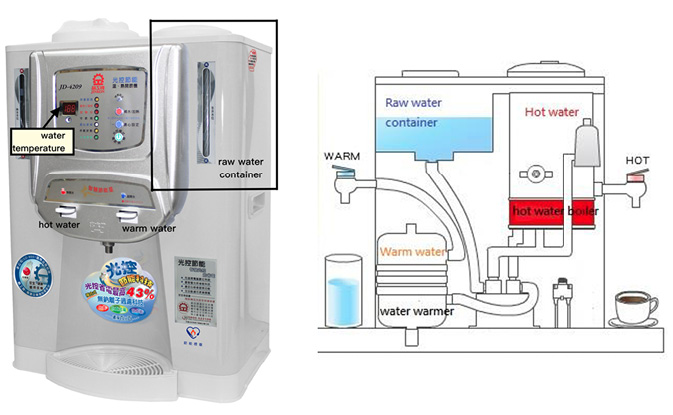
Figs. 25.1, 25.1b Mirror perspective. Pictures and details of water dispensers (reproduced by kind permission of JINKON corporation, 2011)
Size: 400 x 300 x 580 mm. Total capacity: 10.2 litres (includes 5.5 litres of ‘raw’ water, 3 litres of freshly boiled water, and 1.7 litres of tepid water). Net Weight: 7.4 kilogrammes. Shape: approximately a rectangular parallelepiped. Colour: silver white. Functions: drinking water filter, boiler, and warmer. Locations: It is generally located in the kitchen or dining room in Taiwan’s households. Because of its size, it needs to be placed on a stable cabinet or on a table. Other types: there are other kinds of drinking water reservoirs in Taiwan’s households: The picture shown in this paper is one of the typical drinking water reservoirs in Taiwan’s households. There are several types of drinking water containers appropriated in Taiwan’s domestic area, such as thermal kettles, boiling water pots, and so on. In order to clarify the intertwined water usage practice, I amplify this drinking water reservoir to make sense of how Taiwanese households purify and prepare their daily drinking water.
Keywords: purifying, preparing, transforming, containing, appropriating
Anxiety over Daily Drinking Water
Water is experienced and embodied both physically and culturally. The meanings encoded in it are not imposed from a distance, but emerge from an intimate interaction involving ingestion and expulsion, contact and immersion. (Strang 2004: 4)
Water is vital not only for food preparation but also for flushing the toilet; cleaning clothes, dishes, and ourselves; and of course for drinking. Within these different usages of water, I mainly focus on how Taiwanese manage their drinking water in their households. The main purpose of studying drinking water at home is not only that it represents a most ordinary part of domestic life that we usually take for granted, but also because it shows co-ordinated systems of material and immaterial culture in Taiwan. The ways of preparing drinking water at home reveal the forms of people’s physical and mental activities. The material appliances for refining ‘raw’ water into drinking water, their uses, knowledge of their function, and reasons to make it drinkable, are co-ordinated as an ordinary domestic routine. Further, knowledge about how to manage the drinking water at home also correlates with standards and criteria in wider society. Whether the context is hygiene, health considerations, tastes, or seasonal alternations, ways of managing drinking water embody the embedded culture context.
Because of the limited information about the uses of domestic tap water, people are anxious about the quality of the water, its odour and taste, the chemicals it contains, and even some diseases related to water. In general, domestic water users have only a limited ability to evaluate the quality of the water which runs through their domestic space. There is great anxiety over hygiene standards when deciding which water resources are reliable, especially concerning drinking water that will be absorbed into the human body. This anxiety forces people to manage their drinking water in various ways. In Gray’s research (1994), when people worry about the quality of their drinking water, they may boil their tap water or install alternative systems to purify it (filter systems, activated carbon, reverse osmosis, ion exchange, disinfection, and so on). Knowing how to manage the quality of drinking water correlates to maintaining a certain quality of life (Strang 2004), or even correlates to having cultural ‘good taste’ (Wilk 2006).
Drinking Water in Taiwan’s Households
Why do Taiwanese households worry about their domestic drinking water? Taiwan is a country which consists of many islands, and the main island is located in the northern subtropical area. Thus, the weather in Taiwan is warm and humid between May and September, typically between 27 and 35 degrees Celsius. The orientation of the main island is north to south, while the convergence of the Eurasian plate and Philippine Sea plate in Taiwan results in the orientation of the mountains in Taiwan also being north to south. This in turn causes the general direction of the rivers to have an east-to-west orientation, with the result that they are short and turbulent. In addition, as a result of the geographic location of Taiwan, the rainfall is intensive in summer, coming generally from typhoons and convective rain. Because of the uneven rainfall area and the marked seasonal variations, Taiwan has a flood problem in summer and water shortages in winter. Hence there are more than a hundred river reservoirs in Taiwan in order to provide even water distribution throughout the year. Further, due to the uneven rainfall patterns, the rain generally falls in summer as sudden downpours; thus, the water stored in summer is turbid and mixed with sand, which prolongs settlement time and the production of clear water. The soil conditions in Taiwan are also a factor in the quality of the water: in some areas the soil consists of limestone which easily leaches carbonate, calcium, and magnesium ions; in other areas, it consists of sandstone, which leads to serious problems of deposits and turbidity; all this causes experts to worry about the water quality in Taiwan.
The water resources in Taiwan are run by a single governmental organisation: the Taiwan Water Corporation (TWC). According to a report from the TWC,1 the tap water in Taiwan is potable. However, because of the water storage infrastructure (it is stored in underground water tanks or in water towers) and an old pipeline system (which is affected by rust), the tap water may become polluted before it reaches homes. Therefore, on the official webpage of the TWC, a list of reliable companies for cleaning and disinfecting water tanks and/or towers, and stainless-steel pipes, is provided. In addition, the TWC provides a water quality testing service, at the customer’s own cost, to ensure that people’s drinking water quality is satisfactory. According to the drinking water regulations in Taiwan,2 since 2006 (at least from 2006), the tap water supplied by the TWC, and some other (community-installed) public water suppliers, should meet the criteria of the drinking water standard. Theoretically the tap water in Taiwan can be drunk directly from the tap.
Because of continuing anxiety over the quality of drinking water, however, Taiwanese people use many water appliances to purify their domestic drinking water. Owing to the complex nature of these appliances, and the various different hygiene standards, conventions, and preferences for drinking water, I portray the material paths of drinking water via their different temperature states to unfold the ways in which drinking water is managed in Taiwan’s households (Figure 25.2).
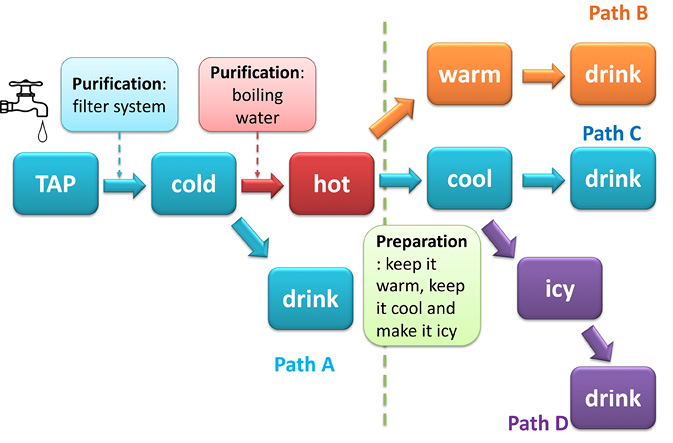
Fig. 25.2 Flow chart: material paths of drinking water in Taiwanese households
According to my small-scale empirical study in Taiwan, there are four material paths taken by drinking water. The purpose of grouping these paths of drinking water is to try to achieve a systematic comprehension of the enormous variety of treatments and preparations for drinking water in Taiwanese households. In order to achieve a clear understanding of how the Taiwanese typically manage their domestic drinking water, I mainly discuss path B in this chapter. The point in this path is not only that people purify their water by boiling it, but also that they prefer to keep their drinking water in a warm state. In this path, people adopt the second treatment for purifying their drinking water: boiling, compared to path A. One of my informants tells the reasons why they boil their drinking water:
Interviewer: So, you will not drink water directly after filtering it with a Brita?
Ming: That is not drinkable water!
Interviewer: Why!?
Ming: That is still “raw”/ [tap] water!
(Informant: a person living on their own in a small flat)
Co-ordinated Water Flows and Storage Systems at Home
I use flows of drinking water as a metaphor to describe not only the fluidity of water but also the consumption of drinking water as a continuous process. Rather than tied to considering it as the moment of paying the water bill, the consumption of drinking water can be understood as a restless domestic water cycle, which consists of inflows, domestic circulation, and outflows. At each stage, the consumption of drinking water relates to a raft of material things and various social norms and conventions. It is clear that how water flows into the house affects the ways of using and storing water. Today, water is a fluid flow; it runs in and out through pipes, rather than being a ‘living’ flow from a stream or river. This means that turning the tap on is equal to turning the water flow on, and to turn the tap off means to stop the water flow. The house itself can thus be seen as a big container for water storage, which is fed through a network of pipes. The water pipes and water tanks at home are part of the supply chain of water which ensures that people can use water all the time without worrying about peak demand for water. In this sense, water is more or less stored (Shove and Chappells 2001: 53). In other words, water pipes and tanks, water appliances and containers play similar roles of regulating the demand for water.
In order to understand these co-ordinated household drinking water flows and storage methods, I emphasise two aspects involved in this practice: materiality and material paths; convention and competence. Before I examine these elements, I shall elaborate this co-ordinated practice. The concept of practice can be traced to Ludwig Wittgenstein and Martin Heidegger. Theodore Schatzki’s reinterpretation (1996) resituates Wittgenstein’s idea of intelligibility and understanding from inside the human mind into a flow of praxis. Schatzki sees intelligibility and understanding of practice as something which is both social ordered and individual. He explains that a practice is a dispersed nexus of doings and sayings in a temporal and spatial complex. Further, for him, the concept of practice is a means for theorists to overcome the dilemma of structure and action (Schatzki, Knorr-Cetina, and von Savigny 2001). Anthony Giddens’s The Constitution of Society also discusses practice in relation to the issue between agency and structure; he states that ‘the day-to-day activity of social actors draws upon and reproduces structural features of wider social systems’ (1984: 24). In other words, the flow of routinised social life depends on many forms of practical knowledge, being guided by social structural features, social rules, and resources.
Andreas Reckwitz suggests that practice is ‘to regard agents as carriers of routinized, oversubjective complexes of bodily movements, of forms of interpreting, knowing how and wanting and of the usage of things’ (2002: 259). He defines a practice as ‘a routinized type of behaviour which consists of several elements, interconnected to one [an]other: forms of bodily activities, forms of mental activities, “things” and their use, a background knowledge in the form of understanding, know-how, states of emotion and motivational knowledge’ (Reckwitz 2002: 249). In his terms, practice theory concerns not only the ‘hardware’ of material things, but also the ‘software’ of an individual’s competence, emotion, and motivation. And the most important thing is how the hardware and software connect and interact with each other and make the practice with widely shared knowledge. Alan Warde goes further, asserting that practices are not only related to the integration and reproduction of the diverse elements of social existence – such as minds, texts, conversations, bodily movements, things, practical knowledge, and so on – but also require their competent practitioners to ‘avail themselves of the requisite services, possess and command the capability to manipulate the appropriate tools, and devote a suitable level of attention to […] conduct [them]’ (2005: 145). More broadly still, for Schatzki, social life is a ‘human coexistence, inherently transpir[ing] as part of nexuses of practices and material arrangements’ (2010: 129). In addition, he constructs an ontology which considers that social phenomena consist in nexuses of practice(-materiality) arrangements. Practice in this context means an organised spatial-temporal manifold of human activity; material arrangements indicate a range of interconnected material entities. He then brings both social and material nature together, to evince that we exist in a complex of nexuses of practice and material arrangements (Schatzki 2010: 129). In Schatzki’s latest account, it seems that he makes sense of social phenomena or social life through a temporal-spatial network and an entity comprising practice and material arrangements.
In sum, practice theory concerns routinised behaviours, competence, making do, bodily movements, mind, and even the proper level of devotion and attention to doing. Additionally, tools, objects, things, and materiality are also important to construct a practice. That is to say, using, holding, and keeping domestic things are part of the ongoing domestic practice in our daily lives. An enormous variety of material items and containers, and many cultural conventions, values of things, behaviours of using and storing, relevant competence and mind status are all included in routinised practice.
Therefore, in order to have a better sense of how drinking water is stored and how it circulates through the home, I focus on both the materiality and the relevant immateriality – the conventions and competence – which drive the movements of drinking water or make sense of how it is organised and stored. In the following sections, I discuss several concepts – materiality and material paths, conventions and competence – which are involved in the co-ordinated drinking water flows and storage facilities in Taiwan’s households.
Materiality and Material Paths
What is materiality? Tilley et al. state that, owing to material objects being perceived as dead matter and having utilitarian significance, they can easily be considered as tools, technological substrates of life, or passive markers of social status and ethnic difference (2006: 2). They find that materiality could refer to very heterogeneous and ambiguous meanings which are entangled and rooted in several metaphors and cultural connections (Tilley et al. 2006: 3). Further, they examine the term ‘things’, which is used to refer to materiality. Due to things usually being related to material possessions and to physical and economic goods, they have ‘material benefits for persons. The object and the objectivity of things supposedly stand opposed to the subject and the subjectivity of persons’ (Tilley et al. 2006: 3). Tilley et al. contend that one of the main features of studying material culture is that it reveals ‘the dialectical and recursive relationship between persons and things: that persons make and use things and that the things make persons. Subjects and objects are indelibly linked’ (Tilley et al. 2006: 4). Following this theoretical context, what the typical material object is appears in this path of ‘warm’ drinking water in Taiwanese households, which connects the objectivity of things and the subjectivity of household users. This object is the water dispenser (Figure 25.1). In order to have an adequate understanding of how this type of water dispenser works in Taiwan’s households I list several details of this material object. After reviewing the details of the water dispenser typically used in Taiwan’s domestic space, we might be able to image how domestic water flows into, is stored in, and flows out of the water container.
Arjun Appadurai (1986) and Igor Kopytoff (1986) suggest making sense of materiality in two ways. One is through the ‘cultural biography’ of things, which focuses on the short-term path of things as they pass through different hands, contexts, and uses. The other is the social history of things, which concerns the long-term path of things in relation to a particular kind or class of object. This path reflects historical shifts and large-scale dynamic transformations. Attending to the social history of things allows us to appreciate their flow over a longer period of time and in a broad social context, but this social history of things depends for its detail on the relatively short-term, specific, and intimate trajectories of forms, meanings and structures. Equally, many small shifts in the cultural biography of things may influence changes in the social history of things (Appadurai 1986: 36).
Following the drinking water flow through a water dispenser, its cultural biography starts with the dispenser being refilled with tap water (or bottled mineral water); then the ‘raw’ water in the dispenser will be boiled and kept warm at a specific temperature; and finally the water will be ready to drink. As for the storage aspect of a water dispenser, according to the typical water reservoir shown in the beginning, it contains two compartments, one stores freshly boiled water and another stores warm water. In other words, a water dispenser is a boiler for raw water; after water is boiled it becomes the reservoir for more than two temperatures of drinking water. Water flows into the reservoirs of water dispensers regularly, and the dispenser transforms the state of drinking water as well as storing it, no matter which state it is in (Figure 25.3).
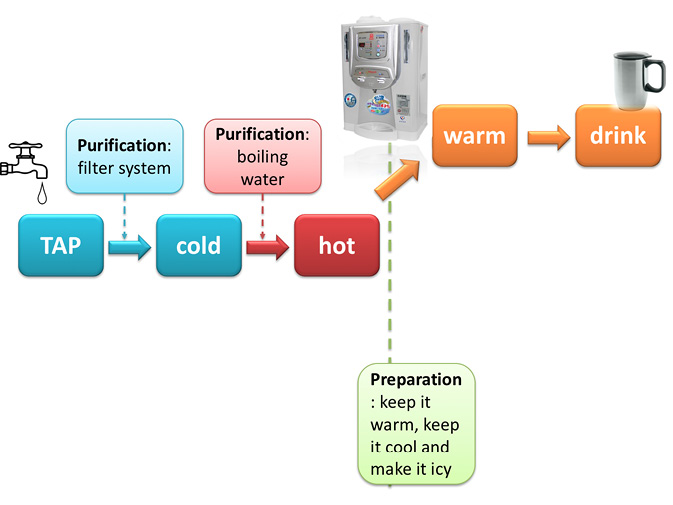
Fig. 25.3 Flow chart: material path and appliances of ‘warm’ drinking water in Taiwanese households
Because my research informants in this path preferred to have their drinking water in a warm state all the time, they mainly used water appliances that have a thermal function. In my interviews, there are four cases that mainly use a water dispenser to prepare their daily drinking water. For example, in Jio’s house, her family uses filtered tap water and a water dispenser at the same time. The water dispenser also keeps their drinking water in a warm state all the time. In Jio’s house they even use a flask for their daily drinking water – even in the summer (Figures 25.4a, 25.4b).
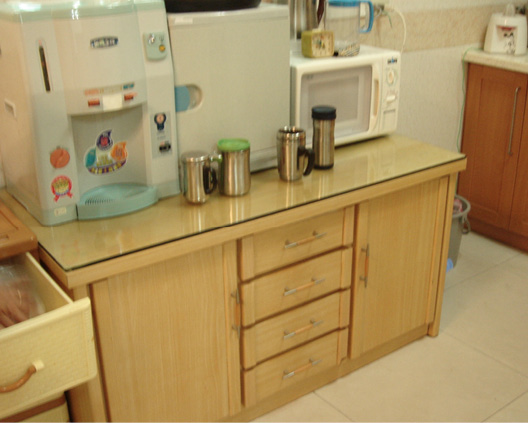
Fig. 25.4a Jio’s water dispenser (there are four flasks in front of it, for the four adults in her family; photograph by Cheng Yi-Ping)
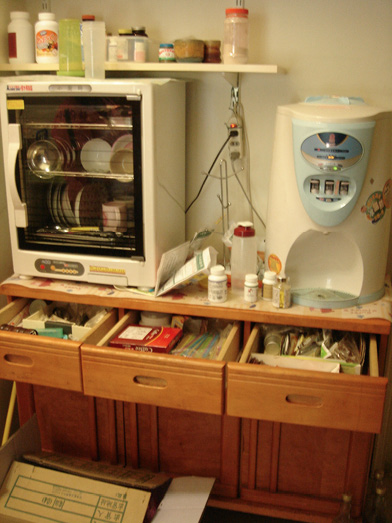
Fig. 25.4b Wu’s water dispenser (photograph by Cheng Yi-Ping)
Conventions and Competence
Following the discussion above, what kind of cultural conventions and relevant competence is involved in this co-ordinated social practice of preparing domestic drinking water? There are two foci here: the first is the ways of purifying drinking water, and the second is the preference for warm drinking water.
Firstly, the purifying treatment of boiling water shows that people distrust tap water and reveals the hygiene conventions and traditions that affect even filtered, drinkable tap water. How are these normative conventions for drinking water formed? I want to argue that the knowledge to judge the hygiene standards of drinking water is formed unobtrusively and imperceptibly. It is not only based on scientific criteria but is also affected by cultural shifts over time in society. Before the tap water system was widely installed in Taiwan, people were used to boiling their water for drinking. This experience and convention of purifying drinking water then passed from one generation to the next. According to one of my informants, even though he belongs to the younger generation, he learned his hygiene standards and purification procedures for drinking water from his parents, and he still believes that this boiling procedure is ‘necessary’. Even though he has tried to change this procedure, the conventional norms for drinking water make him comply.
Jay: My filter system meets the criteria of drinking water, and I did try to drink water directly from tap for two weeks. But, you know, elderly people (his mother and elder cousins) still think that boiled water is better [than water directly from the tap]. They ask me to boil water after they found me drinking it directly from tap.
(Informant: a person living on their own in a large flat)
Even where water-purification technology is up-to-date, then, Taiwanese households still appropriate the old habit of boiling water to manage the quality of their daily drinking water. Thus, we could consider that the social history of drinking water has not diverged from its original purifying treatment – ‘boiling’, even though individuals have alternative options.
Secondly, the preference for drinking warm water all the time correlates with cultivated cultural knowledge. Why does drinking warm water all the time indicate a healthier drinking habit? According to a Chinese medical approach, the human body takes more energy to consume cold (icy) drinks. In order to keep the body’s energy and circulation in a warm state, it is better to serve drinks warm (or at room temperature) all the time, even in the hot summer. This kind of health notion is inherited from a cultural background and is practised in daily life. Therefore, people tend to drink water that is warm or at least at room temperature. In addition, people use various water appliances to make sure their flow and storage of drinking water suit their specific preferences.
Further, warm water is not only regarded as healthier than cold water, it is also convenient for making other drinks. Wu and Jio both mention that a water dispenser is convenient for preparing instant drinks and hot drinks for children and for themselves.
Wu: We do not have time, brewing some instant coffee or tea is easier.
(Informant: a couple living in a small flat)
Jio: You know, my granddaughter needs warm water to make instant milk, and I need some instant tea (points to water dispenser and cabinets which have some tea bags).
(Informant: a family lives in a large house)
Considering the effects of convention and competence on the social history of drinking water in Taiwan’s households, we could conclude that the old habit of boiling water persists in the social history of drinking water in Taiwan, not diverging from its path as a purifying treatment. Also, we could say that inherited Chinese medical beliefs and the convenience of warm water make the social history of drinking water stay close to its purification through boiling path.
Conclusion
As a consequence of its topography and uneven rainfall patterns, water is generally turbid in Taiwan. However, the hygiene standards of tap water in Taiwan meet the required drinking water standards, according to the report from the Taiwan Water Corporation. The Corporation has also produced many publications advocating the proper ways to use water, how to protect it from secondary pollution, and how to clean water tanks. However, the behaviour of the Taiwanese people reveals that they ignore the published standards (and information); people have their own hygiene standards and their own ways to purify water. Based on their and their predecessors’ experiences with water use before there was a mains water supply and domestic taps, people still tend to boil water to ensure that it is purer than the raw form. This kind of purifying treatment is cultivated as an inheritance passed on by previous generations. Like the preference for having warm water all the time, this kind of preparatory treatment is rooted in a cultural system and is practised in people’s daily lives. In other words, the ways of preparing drinking water, cultivated over time, are rooted in cultural understanding, and are practised in accordance with the relationship between purification and preparation treatments.
According to different drinking water preferences, people use a raft of appliances to prepare their drinking water. I emphasise that these water appliances’ materiality not only contributes to storing water, but also to purifying, preparing, and transforming drinking water. In other words, reservoirs of drinking water are not just containers; reservoirs help to form and transform various states of drinking water. Reservoirs represent the appropriation of material things, which relates to the continuous flow and consumption of drinking water, especially for storage considerations.
The flow and storage of drinking water in the domestic area demonstrates how water consumption at home is a continuous process of using and storing, rather than simply being the moment of paying the water bill. Water consumption is a co-ordinated routine which involves knowledge and conventional norms, and hygienic standards for drinking water, various preferences correlating to seasonal alternations, and a range of water appliances.
Notes
References
Appadurai, A., ed., The Social Life of Things, Commodities in Cultural Perspective (Cambridge/New York: Cambridge University Press, 1986).
Giddens, A., The Constitution of Society (Cambridge: Polity Press, 1984).
Gray, N. F., Drinking Water Quality (Cambridge: Cambridge University Press, 1994).
JINKON Corporation, ‘Eco-light control’, Jinkon, 2011, <http://www.jinkon.com.tw/index.php?fn=prodent&no=428&no1%20=989&no%202=29117&no3=11&no5=E#> [accessed 26 January 2017].
Kopytoff, I., ‘The Cultural Biography of Things: Commoditization as Process’, in A. Appadurai, ed., The Social Life of Things, Commodities in Cultural Perspective (Cambridge/New York: Cambridge University Press, 1986), pp. 64–91.
Ministry of Justice, ‘Drinking Water Management Act’, Laws & Regulations Database of The Republic of China, 2017, <http://law.moj.gov.tw/Eng/LawClass/LawHistory.aspx?PCode=O0040010> [accessed 26 January 2017].
Reckwitz, A., ‘Toward a Theory of Social Practices: A Development in Culturalist Theorizing’, European Journal of Social Theory, 5.2 (2002): 243–63.
Schatzki, T., Social Practices: A Wittgensteinian Approach to Human Activity and the Social (Cambridge: Cambridge University Press, 1996).
——, ‘Materiality and Social Life’, Nature and Culture, 5.2 (2010): 123–49.
Schatzki, T., K. Knorr-Cetina, and E. von Savigny, eds, The Practice Turn in Contemporary Theory (London/New York: Routledge, 2001).
Shove, E., and H. Chappells, ‘Ordinary Consumption and Extraordinary Relationships: Utilities and their Users’, in J. Gronow, and A. Warde, eds, Ordinary Consumption (London/NewYork: Routledge, 2001), pp. 45–59.
Strang, V., The Meaning of Water (Oxford: Berg, 2004).
Tilley C., W. Keane, S. Küchler, M. Rowlands, and P. Spyer, eds, Handbook of Material Culture (London: Sage, 2006).
Warde, A., ‘Consumption and Theories of Practice’, Journal of Consumer Culture, 5.2 (2005): 131–53
Wilk, R., ‘Bottled Water: The Pure Commodity in the Age of Branding’, Journal of Consumer Culture, 6.3 (2006): 303–25.